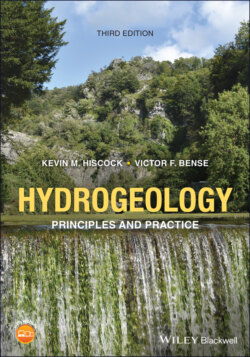Читать книгу Hydrogeology - Kevin M. Hiscock - Страница 41
1.7.3.1 Management and protection of groundwater resources in the United States
ОглавлениеGroundwater management in the United States is highly fragmented, with responsibilities shared among a large number of federal, state and local programmes. At each level of government, unique legal authorities allow for the control of one or more threats to groundwater, such as groundwater contamination arising from municipal, industrial, mining and agricultural activities.
Beginning with the 1972 amendments to the federal Water Pollution Control Act, and followed by the Safe Drinking Water Act 1974, the federal government’s role in groundwater management has increased. The introduction of the Resource Conservation and Recovery Act (RCRA) 1976 and the Comprehensive Environmental Response, Compensation and Liability Act (CERCLA) 1980, established the federal government's current focus on groundwater remediation. With these acts, the federal government has directed billions of dollars in public and private resources towards cleaning up contaminated groundwater at ‘Superfund’ sites, RCRA corrective action facilities and leaking underground storage tanks. In 1994, the National Academy of Sciences estimated that over a trillion dollars, or approximately $4000 per person in the United States, will be spent in the next 30 years on remediating contaminated soil and groundwater.
The approach to groundwater protection at the federal level has left the management of many contaminant threats, for example hazardous materials used by light industries (such as dry cleaners, printers or car maintenance workshops), to state and local government authorities. Other groundwater threats, such as over‐abstraction, are not generally addressed under federal law, but left to states and local governments to manage.
In 1984, the US Environmental Protection Agency (USEPA) created the Office of Ground Water Protection to initiate a more comprehensive groundwater resource protection approach and to lead programmes aimed at resource protection. Such programmes include the Wellhead Protection and Sole Source Aquifer Programs, which were established by Amendments to the Safe Drinking Water Act 1986. The Wellhead Protection Program (WHPP) encourages communities to protect their groundwater resources used for drinking water. The Sole Source Aquifer Program limits federal activities that could contaminate important sources of groundwater.
State groundwater management programmes are seen as critical to the future achievement of effective and sustainable protection of groundwater resources. In 1991, the USEPA established a Ground Water Strategy to place greater emphasis on comprehensive state management of groundwater as a resource through the promotion of Comprehensive State Ground Water Protection Programs (CSGWPPs) together with better alignment of federal programmes with state groundwater resource protection priorities (USEPA 1992).
